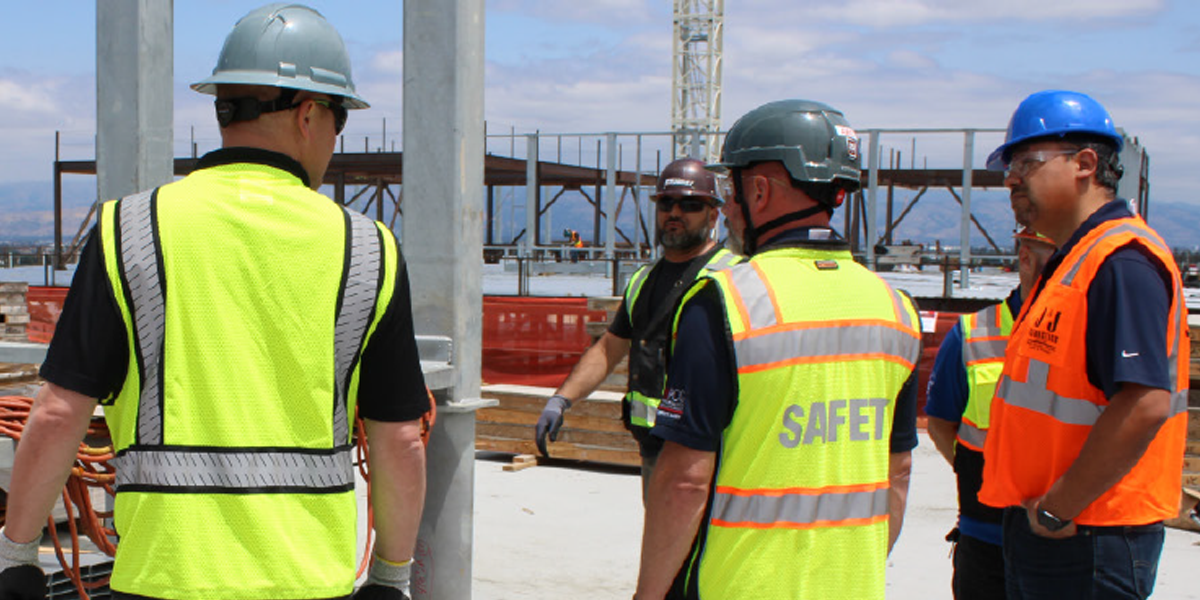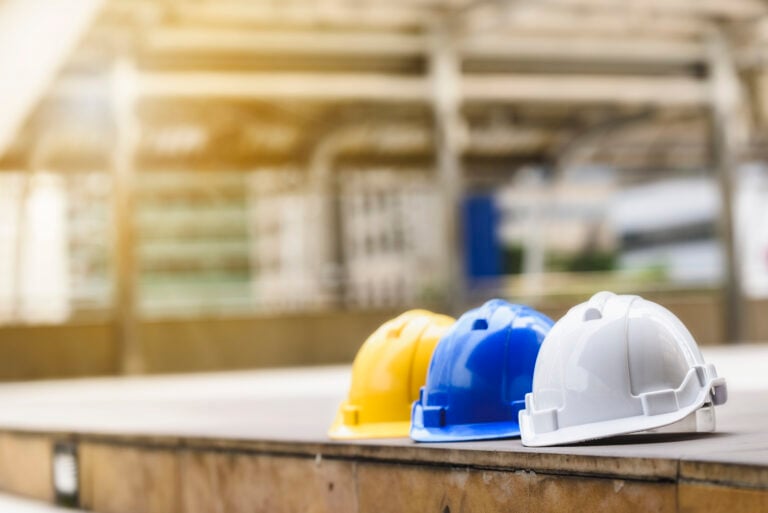AWCI safety leader Matt Taylor, director of compliance/risk at OCP Contractors in Ohio, had a brilliant idea: Why not put together a group of safety professionals from AWCI member firms to make confidential safety culture and performance reviews available to members? He shared the idea with Ed Hanley, safety director at The Raymond Group in California, and a few other AWCI safety leaders to see what kind of response he would get. Matt’s idea was extremely well received and has already resulted in two AWCI Peer Safety Reviews, one at Daley’s Drywall & Taping in San Jose, Calif., and the other at South Valley Drywall in Littleton, Colo.
AWCI’s peer safety reviews are performed by volunteer safety and health professionals, most of whom are also serving on AWCI’s Safety Directors Committee. The eight volunteers travel to the city where the company being reviewed is based. Each of them signs a non-disclosure agreement before proceeding with the review. Each review includes one or more jobsite inspections, inspection of the prefabrication shop (where applicable), interviews with several employees and managers, and thorough evaluation of written safety and health programs and pertinent recordkeeping documents. The reviews conclude with a two-hour presentation and discussion with the company’s leadership. During the presentation the review team presents its findings and shares recommendations for improvement to the leadership team.
The two companies that have been reviewed and the safety review team have agreed to share several of the key lessons learned from the first two reviews. Read on.
Safety Program Improvement
No matter how good a safety and health program is, the program can always be improved. If a company is open to evaluations and recommendations from other companies’ safety professionals, the benefits can be exceptional. Even though many AWCI member firms compete for business, there is never a shortage of sharing occupational safety and health related information and resources because the goal is the same for every company—protect our workers from work-related injuries and illnesses.
Evaluate Your Safety and Health Program Annually
Missing, outdated and obsolete safety and health program components are common in our industry. Regulatory requirements, personnel, scope of work, technology and many other factors can change very quickly in the occupational safety and health arena. However, safety and health programs with outdated components can present liability issues for the company. Be sure to evaluate your company’s safety and health program at least annually, and make the appropriate changes accordingly.
Assess Your Safety Program for Too Much Information
Too much information in a company’s safety and health program can be harmful. Even though extremely thorough, comprehensive safety and health programs are well intended, if the company is not in full compliance with every minute detail described in its program, it is unnecessarily exposing itself to liability. Keep your written safety and health program as simple and straightforward as possible while ensuring that all required safety and health program components are properly addressed. Consider having an attorney who specializes in occupational safety and health evaluate your program.
Verify Leadership Congruency Company Wide
A company’s safety culture may not be viewed and/or implemented by company leadership the same way throughout the company. This is especially true when a company has different divisions, such as a commercial construction division, a residential construction division and/or a prefabrication shop. Sometimes even a company’s corporate office is not on the same page with other parts of the company in terms of worker safety and health. Bring the leadership together to reiterate the company’s safety and heath philosophy, policies and procedures. Establish practices to evaluate and verify that the leaders are executing the desired safety culture company wide.
Various Training Mechanics Are Successful
Training mechanics tend to vary throughout the wall and ceiling construction industry, but all of them can be successful. Learn what other companies are doing for safety and health training and determine what works best for your company through trial and achievement.
Safety Responsibilities Can Be Overwhelming
Regardless of whether your company has a full-time safety director, or someone else in the company is assigned safety and health responsibility, the job is often overwhelming. Much of the time these individuals have to focus their attention on a few top priorities while letting other high priority items go unattended. Help these individuals by having others in the company share safety and health responsibility. Superintendents, foremen, human resources employees and others can help those with safety and health responsibility address all high priority items.
Take Advantage of Available Safety and Health Resources
There are numerous safety and health resources available to wall and ceiling industry construction firms through the Association of the Wall and Ceiling Industry and much of its membership. Learn what resources are available to you by participating in AWCI’s Safety Directors Committee meetings and targeted safety functions at AWCI’s convention and fall conference. You could also obtain access to great safety and health resources by requesting a peer safety review for your company, or volunteering to participate in a peer safety review. Learn about the resources that are available to you, and take advantage of them to help improve safety and health in your company.
Sign Up for a Future Peer Safety Review
If you would like to be placed on the list for a future AWCI Peer Safety Review, send an email to AWCI’s Pete Chaney at [email protected]. The reviews takes two full days, plus two hours the morning of the third day. The review team will need a Wi-Fi accessible conference room large enough to comfortably support up to 15 people from 7:30 a.m. to 3:30 p.m. the first two days, and from 8:30 a.m. to 10:30 a.m. the third day. A large screen monitor or LCD projector with a screen are needed on the third day as well.
Peter G. Chaney, MS, CSP, is AWCI’s director of safety, health and risk management.





